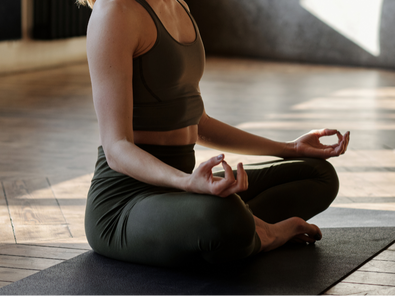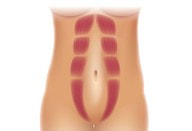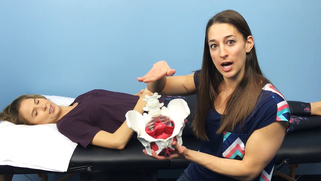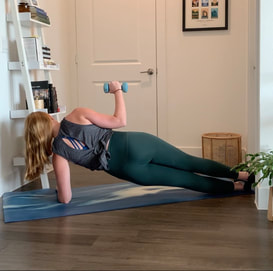|
By Emylea Trotter  Are you a new runner? Have you decided to start running to improve your fitness? Or have you been training for years now and looking for more ways to improve performance? Before lacing up your shoes, check out these 8 useful running tips for beginners (and great reminders for you experienced runners!).
1 Comment
Guest posting by Emylea Trotter  Happy New Year! We hope you had a safe and fun celebration to ring in the new year. Along with the New Year’s celebrations comes the tradition of making New Year’s resolutions. Resolutions are made to reach their goals, improve their health, and better their lives. Many people are successful at keeping their resolutions, while many others fail. Let’s breakdown the best ways to successfully keep your 2022 resolutions! Guest posting by Emylea Trotter  The “Holiday Blues” is a term coined by National Alliance on Mental Illness that is the temporary feeling of anxiety or depression during the holidays that can be associated with the extra stress, unrealistic expectations or even memories that accompany the season. These feelings could include but are not limited to:
But why does this matter? Guest post by Rosanne Ho  Our feet and ankles are the base of our body, and are a crucial aspect to the foundation of everything we do. It’s helpful to have strong, resilient ankles to prevent ankle injuries or foot pain as well as prevent dysfunctions up the chain (hip, knee, foot). But what happens when you do experience ankle pain? Let’s dive into a common region our physical therapists treat!  By Ashley Johnson If you consider yourself a runner or even enjoy a nice run through the park or on the treadmill now and then, you know that running can place a lot of stress on the body. While it’s healthy exercise and can make us feel great, it puts stress on our ankles, feet and bodies in general. Because of this, it can be an easy target for unwanted pain and injury. So, how can we continue doing this strenuous activity in a way that keeps our bodies protected and promotes injury prevention? There are a combination of actions we can take to keep our best full-body health in running. 1) Get Proper Footwear The rules are a little all over the place when it comes to how often you should replace your running shoes, but a general rule of thumb is about every 500 miles. So, if you’re a runner, that can mean anywhere from 1 to 3 years. When you do go to pick your next pair of shoes, make sure you’re getting properly fitted (you can usually find shoe stores that offer this near you through a quick Google search) and that you’re getting shoes solely for the purpose of running. Your running shoes should be just that, while you have a different pair for walking and lifting weights. 2) Think About Your Whole Body We often think about our knees, ankles and feet when running and while these are common pain points for runners, it’s important to think about them in the context of our whole bodies. Did you know that the alignment in our feet (and how we walk and run) affects the muscles and ligaments in our pelvis? Or that our pelvic floor muscles are directly attached to our hip muscles? Because we often compensate for our pain areas by shifting our focus to another area, one pain point can often lead to another. For example, avoidance of pain in the hip can strain the pelvic floor muscles leading to issues like leaking when running. This is why it’s important to see a physical therapist when you’re experiencing any pain with running or even when you’re ready to get started, so they can help you get to the root cause of the problem and prevent further injury. 3) Try To Avoid Overuse Overuse is one of the most common causes for foot pain when running. Try to avoid this by implementing pre-run and post-run stretching and massage to warm up and cool down properly, start slow and increase distance and intensity slowly throughout your running journey. Running on a treadmill can also help prevent overuse injuries by allowing you to run at a smooth, steady pace and focus on your form. Some good general rules to keep in mind for proper running form include:
Adding flexibility and strength training into your routine can also help with pain and injury prevention for runners. The stronger and more resilient our muscles are, the better they respond when we’re using them with proper form. Try implementing these 3 tips before your next run or before beginning your running journey. If you’re experiencing pain, see a physical therapist for an initial evaluation to assess your pain points and your best course of action for moving forward and getting back to running pain free. Whether you’re just getting back into it, starting for the first time or are a seasoned runner, keeping these things top of mind will improve your running health and help prevent injury so you can keep doing what you love with a healthy mind and body. Want to take the next step in securing longevity and preventing injury? Sign up for an injury prevention screening with us! References:
Cronkleton, E. (2020, January 27). Proper Running Form: Tips and Techniques to Run Better. Healthline. https://www.healthline.com/health/exercise-fitness/proper-running-form#running-form. By: Ashley Johnson  Fixing a problem often starts with talking about that problem, but when it’s something like pelvic pain, pain during sex or leakage, this can be a difficult, but necessary step. As we leave Pelvic Pain and Mental Health Awareness Month, there’s no better time to help those who may have been suffering in silence take a step toward treatment. According to the Mayo Clinic, 1 in 4 women experience this leakage (also known as incontinence,) and the American College of Gynecology and Obstetrics reports that as many as 75% of women will experience pain with sex at some point. And it’s not all just the elderly or pregnant and postpartum women. This means that it’s not only likely, it’s highly likely that you’ve met someone experiencing either of these issues. But how often have you felt comfortable enough to talk about it? By Dr. Katie Casto, PT, DPT, PCES  Diastasis Rectus Abdominis (DRA) refers to the separation of the two muscle bellies of the rectus abdominis - our “6 pack” muscle. The separation occurs at the linea alba: the connective tissue that runs vertically down the middle of the muscle (separates the two sides of the “6 pack”) that can become thinned or stretched out. This separation or “gap” can occur at the navel, above the navel or below the navel. How to know if you truly have a diastasis? Keep reading! By Dr. Katie Casto, PT, DPT, PCES  Many women experience pelvic floor related issues like urinary incontinence (leaking urine), bowel dysfunction (constipation, straining, incomplete emptying), pelvic girdle pain, pain with intercourse/penetration, pain with medical exams, needing to use the restroom frequently, etc. Many women are also told just to “do kegels” to help their pelvic floor symptoms. The issue with this blanket recommendation to just “do kegels” is that all too often, the recommendation is made without an actual pelvic floor examination. Let’s discuss what a kegel actually is, and how Kegels may or may NOT be helpful based on the cause of pelvic floor dysfunction. By Dr. Katie Cast, PT, DPT, PCES  Leaking urine is extremely common, especially in the female population. The involuntary leaking of urine is also known as urinary incontinence (UI). The prevalence of urinary incontinence is not known as cases are likely vastly underreported. Many studies have reported the prevalence to be anywhere from 25-45% of women, with prevalence increasing with age (Milsom et al., 2019). One study found that 22.9% of ACTIVE women that have never given birth reported symptoms of urinary leaking (Alves et al., 2017). In fact, females participating in high impact sports that are repetitive are at the highest risk for experiencing urinary leaking (Casey et al., 2017). By Dr. Katie Casto, PT, DPT  As we embark on a journey into the new year, many of us have goals we are setting out to reach- and many are related to health and fitness. As you may begin a new fitness journey in 2021 it’s important to keep in mind that setting up a plan as to HOW you will reach your goals is just as important as setting the goals themselves. For those fitness related goals, a crucial factor to include in your plan is recovery. Why is it important to prioritize recovery with your new fitness endeavors? “Overdoing it” without proper recovery (what many of us tend to do with our New Year’s resolutions) can be problematic. Without taking steps to prioritize recovery, we can experience a multitude of negative effects. Although it is important to include exercise at the appropriate intensity to challenge our bodies, it is just as important to give our bodies the TIME to adapt properly and recover fully in order to see the progress you want and stay on track toward reaching your goals without being sidelined by pain or an injury. |
Meet Your TherapistJessica has been in Austin, TX for the past four years. She grew up in Idaho and attended PT school at Idaho State University. She completed an Orthopaedic Residency and became a Board Certified Orthopaedic Clinical Specialist in 2016. Archives
February 2022
Categories
All
|

 RSS Feed
RSS Feed